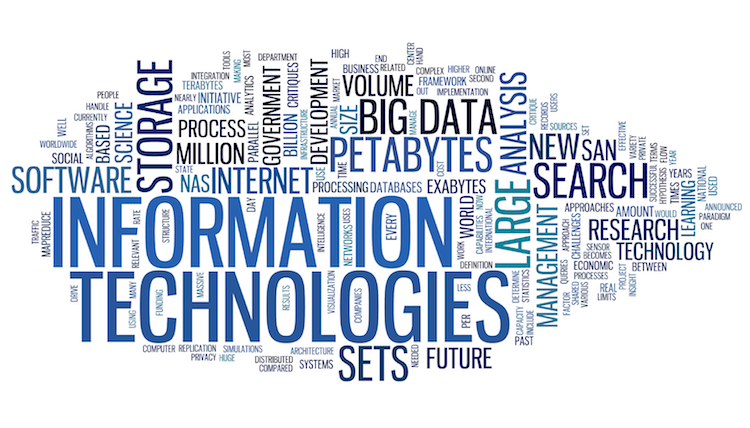The Disrupters: Five Emerging Technology Trends
In its annual assessment of technology advances, Accenture highlights that rapid advancements in technologies, including artificial intelligence, advanced analytics and the cloud, are enabling companies to not just create innovative products and services, but are changing companies’ relationships with their customers and business partners.
The report identifies five emerging technology trends that it says companies must address if they are to build the partnerships needed to succeed in today’s digital economy. So what should be on your company’s radar?
Technology advancements
Rapid advances in artificial intelligence and other technologies are accelerating the creation of intelligent enterprises and enabling companies to integrate themselves into people’s lives, according to Accenture Technology Vision 2018, the annual technology report from Accenture that predicts key technology trends likely to disrupt business over the next three years. The report highlights how rapid advancements in technologies, including artificial intelligence, advanced analytics, and the cloud, are enabling companies to not just create innovative products and services, but change the way people work and live. This, in turn, is changing companies’ relationships with their customers and business partners.
The report surveyed more than 6,300 business and information-technology executives worldwide in 18 industries in 25 countries. Respondents were mostly C-level executives and directors, with some functional and line-of-business leads, at companies with annual revenues of at least $500 million, with most having annual revenues greater than $6 billion.
More than four in five respondents (84%) agree that through technology, companies are weaving themselves into how people live today. The report provides as example of how Amazon, through not only its online presence but also its Echo device and artificial-intelligence assistant Alexa, has integrated itself into people’s everyday lives to such an extent that developers are building dedicated Amazon lockers into new apartment complexes and people are granting the company physical access to their homes via its smart lock system to let couriers make deliveries.
“Technology is now firmly embedded throughout our everyday lives and is reshaping large parts of society,” said Paul Daugherty, Accenture’s chief technology & innovation officer. “Just as cities developed around ports and then railroads, or people rebuilt their lives around electricity, the world today is reimagining itself around digital innovation–and, by extension, the companies that provide those services. This requires a new type of relationship, built on trust and the sharing of large amounts of personal information.”
A case in point in the healthcare industry is the recent announcement by Apple in late January 2018 of an update to its Health app with the iOS 11.3 beta to introduce a feature for customers to see their medical records on their iPhones. The updated Health Records section within the Health app brings together hospitals, clinics, and the existing Health app to make it easy for consumers to see their available medical data from multiple providers whenever they choose. Johns Hopkins Medicine, Cedars-Sinai, Penn Medicine and other participating hospitals and clinics are among the first to make this beta feature available to their patients.
”In the past, patients’ medical records were held in multiple locations, requiring patients to log into each care provider’s website and piece together the information manually,” said Apple in a January 24, 2018 statement in explaining the rationale for the new feature. “Apple worked with the healthcare community to take a consumer-friendly approach, creating Health Records based on FHIR (Fast Healthcare Interoperability Resources), a standard for transferring electronic medical records. “Now, consumers will have medical information from various institutions organized into one view covering allergies, conditions, immunizations, lab results, medications, procedures and vitals, and will receive notifications when their data is updated.” Health Records data are encrypted and protected with the user’s iPhone passcode.
”Our goal is to help consumers live a better day,” said Jeff Williams, Apple’s chief operating officer, in the January statement. “We’ve worked closely with the health community to create an experience everyone has wanted for years — to view medical records easily and securely right on your iPhone. By empowering customers to see their overall health, we hope to help consumers better understand their health and help them lead healthier lives.”
The Accenture report points out that this latest technological transformation is unique in that for the first time the change is a two-way street; people aren’t just using companies’ products and services, but feeding information and access back to them. This level of “integrated innovation” and degree of trust requires a deeper relationship and what it calls a true partnership based not only on a company’s products, but also its goals and values. The report points out that this two-way partnership brings new responsibilities to consumers, business partners, and society at large. For businesses, they are using these increased interactions to build partnerships with customers, employees, government and the public.
The report provides several examples. Tesla, for instance, is partnering with governments to accelerate the development of guidelines needed for autonomous vehicles. Siemens, by offering its MindSphere operating system for Internet of things that can be used for various types of assets, such as manufacturing devices, smart-grid components or power-generation equipment, is creating new partnerships and embedding itself into its business partners’ architectures.
Five emerging technologies
The Accenture report identifies five emerging technology trends that companies need to address if they are to build the partnerships needed for the digital economy.
1. Artificial intelligence. As artificial intelligence grows in its capabilities, so does its impact on people’s lives. Businesses looking to capitalize on artificial intelligence’s potential must acknowledge this impact, “raising artificial intelligence to act as responsible representatives of their business,” says the report. “According to our survey, four out of five executives (81%) believe within the next two years, artificial intelligence will work next to humans in their organizations, as a co-worker, collaborator, and trusted advisor.” The report points out most enterprises still treat artificial technology as a technology tool, “but no one would expect a tool to ‘act’ responsibly, to explain its decisions, or work well with others. But with artificial-intelligence systems making decisions that affect people, companies must teach artificial intelligence to do these things, and more.” The report points out that companies can create portfolios of artificial-intelligence systems with varied skills. Once these systems are trained, these skills can be redirected throughout the workforce as needed and remain available to the company as long as it needs them. The report explains that these systems will not only be able to scale operations, but also adapt to new needs via feedback loops from other deployed models—similar to how continuing education enables employees to adapt to new tasks.
2. Virtual reality technologies. Virtual and augmented reality technologies are transforming the way people live and work by removing the distance to people, information, and experiences, notes the report. The report showed that 36% of executives identify removing distance barriers as a driver in their adoption of extended-reality solutions. The report explains how such models work. Virtual reality visually takes the user out of their real-world environment and into a virtual environment, typically using a headset for viewing coupled with hand-held controllers to navigate the virtual space. Augmented reality overlays digital objects (information, graphics, sounds) on the real world, allowing the user to experience the relationship between digital and physical worlds. Extended reality refers to the spectrum of experiences that blurs the line between the real world and the simulated world. The technology immerses the user through visuals, audio, and potentially olfactory and haptic cues. The two major types of extended reality are virtual reality and augmented reality.
3. Data veracity. The report points out that by transforming themselves to run on data, businesses now face a new kind of vulnerability: inaccurate, manipulated and biased data that leads to corrupted business insights and skewed decisions. To address this challenge, says the report, companies must follow a dual mandate to maximize veracity and minimize incentives for data manipulation.
4. Building to partner at scale. “Businesses depend on technology-based partnerships for growth, but their own legacy systems aren’t designed to support partnerships at scale,” according to the report. “To fully power the connected intelligent enterprise, companies must first re-design themselves.”
5. Intelligent distributed systems. The report points out that businesses are making “big bets” on intelligent environments via robotics, artificial intelligence and immersive experiences, but bringing these intelligent environments to life will require not only adding key skills and workforce capabilities, but also modernizing current enterprise technology infrastructures.







